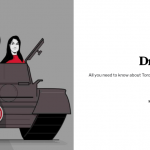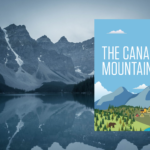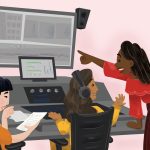UBC Indigenous Reporting class examines health and healing in Aboriginal communities
Duncan McCue and a class of University of British Columbia journalism graduate students have produced eight feature stories that show there is more to Aboriginal communities than problem people and discouraging statistics. As Belinda Alzner explains, these students found there are solutions within these communities, too.
Duncan McCue and a class of University of British Columbia journalism graduate students have produced eight feature stories that seek to not further perpetuate stereotypes and show that there is more to Aboriginal communities than problem people and discouraging statistics—there are solutions within these communities, too.
When McCue returned from a UNESCO conference in Australia last year having learned that journalism educators elsewhere in the world were examining media coverage of Aboriginal issues in their classes, he realized that it was something that Canada needed as well.
And so, he launched Reporting in Indigenous Communities for students in the University of British Columbia’s graduate journalism program. The inaugral class, whose semester has just finished, focused on health issues in various Aboriginal communities in the Lower Mainland.
Kendall Walters and Lucas Powers were assigned to cover the Tsleil-Waututh Nation in North Vancouver. But that is as far as their assignment went. From there, they were expected to flesh out story ideas by talking to people in the community.
“We explored a few story idea options, but we found that when we talked to someone from the community about health, a recurring theme was the connection between culture – language in particular – and the well-being of Indigenous people,” Walters said.
Their story focused on a language class, in which Carleen Thomas goes to a preschool typically once a week to teach three- and four-year-olds Hǝn̓q̓ǝmin̓ǝm̓, an “endangered language” spoken by several First Nations in the Lower Mainland.
“It was really valuable to have time to build relationships of trust with sources that can be wary of the media,” Walters said. “It’s not often that journalists are given an opportunity like this to report on such an under-covered, and often difficult-to-access, population.”
Prior to attending journalism school in Canada, Malin Dunfors worked as a journalist in Australia. For one story, she travelled to an Aboriginal community in the northwestern region of the country. “What I saw and encountered was in stark contrast to what was reported in the mainstream Australian media,” she said. “While doing that story I felt that I got a much better understanding of Aboriginal culture, their history and their relationship with non-Aboriginal Australia.” That experience was enough to intrigue her to take McCue’s class.
Dunfors said she found it striking how similar mainstream coverage of Indigenous stories was in Canada, Australia and Sweden, her home country. So, while working on a story about Indigenous health care providers with her partner, Jacqueline Ronson, Dunfors learned a number of things.
[node:ad]“It taught me a great deal about First Nations and Canada—its past, present and future. I have a much richer and nuanced picture of the country than before I took the course, Dunfors said. “It definitely taught me learning by doing—some things just cannot be taught inside the classroom, you have to get out there and figure out things for yourself.”
McCue says he plans to run the course again next year. And good thing: Both Walters and Dunfor sang praise for their ability to spend time in their assigned communities and the uniqueness of the course, especially in contrast to the mainstream media’s handling of Aboriginal issues.
“Often, reports simply serve to perpetuate stereotypes, without providing a clearer picture of Aboriginal people in this country,” Walters said. “And all too often, stories lack the historical context they need to provide an accurate portrayal of First Nations issues. Duncan’s class is a great step towards changing that.”
Western University also offers a class that examines First Nations representation in the media. That said, in the Western course, there is no field work that matches that offered in McCue’s. Instead, students research and critically examine mainstream coverage of Indigenous people in Canada.
Teaching this course to young journalists is not the only measure McCue has taken to improve reporting on indigenous communities. Late last year—coincidentally when Attawapiskat was making headlines across Canada—McCue launched riic.ca, an online guide to covering Aboriginal communities. “[It] is a guide designed for better journalism about Aboriginal communities,” McCue told J-Source when his site launched in November. “That means good and bad – and everything in between.”
The eight stories that the students of UBC’s pilot Reporting in Indigenous Communities class can be found at indigenouscommunities.com. The features were also turned into a week-long series on CBC Radio called “Shxw'éyelh – Stories of Health and Healing in First Nations communities,” which can be found in their entirety here.
RELATED: A journalist’s guide to reporting on indigenous cultures, Five questions for Duncan McCue





